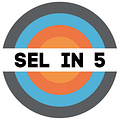This month, we unpack creating asset-based action plans, the importance of establishing common language, and giving folx permission to not be OK.
One additional note: our friends at ThinkGive recently launched a scholarship program focused on increasing access to whole child education. Do you know of a school or organization that lacks funding for social-emotional learning and would benefit from a full scholarship that will bring ThinkGive to its students at no cost? You can nominate them for an Every Child Scholarship.
3 SEL Leadership Thoughts
A good action plan is asset-based and builds buy-in by validating and highlighting the great work already being done in schools. It can be easy to focus on big ideas and new innovations, but start by understanding (and celebrating) where educators in your community are already excelling.
—
When we think about our approach to social-emotional learning and behavior management, it is important to not lose sight of how important establishing common language is. There should be consistency across a school (and a district) in terms of: is everyone speaking the same language when it comes to describing emotions or behaviors? Is this terminology being shared with parents and caregivers? Do students have a voice in determining this common language? Formalizing this helps give adults the language to collaborate (in strengths-based ways) about how to more holistically support students.
—
It is OK not to be OK. We need to give our students, colleagues, and teams permission to not be OK; to give them the coping strategies, tools, and space to, at times, sit with discomfort.
2 Quotes from SEL Leaders
“Student engagement no longer rests at the feet of teachers. For many educators, gone are the days of sage on the stage where teachers are the sole arbiters of information-dispensing and students are merely sponges. Classroom educators have been charged with assuming the role of facilitator and giving students more say in the process of learning design and implementation. With this shift comes the need for an adjustment in the relationship between adults and students.” – Tanji Reed Marshall
—
“As a school leader or coach, you can cultivate a teacher's resilience by helping them identify indicators of student growth. Ensure they use various methods to gather formative assessment data so that they can see the impact of their hard work. Every piece of evidence of growth needs to be celebrated—even if a student is still far from mastering a standard or not all students have achieved the goals.” – Elena Aguilar
1 Question to Reflect On
How might you adapt practices that support students’ well-being to serve your staff members?
—
If you enjoyed that, please consider sharing SEL in 5 with others.
Until next month,
Nick Woolf
Author of SEL in 5
Founder of Inside SEL
p.s. here’s what else I’m reading:

